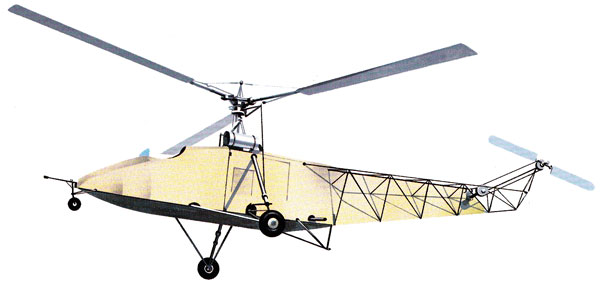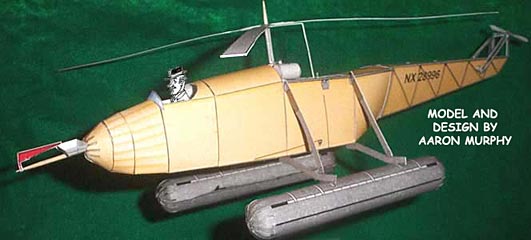
Igor Sikorsky.

Vought-Sikorsky VS-300 Early Helicopter

The first, tentative and tethered hover of the 1940 prototypeSikorsky VS-300 which, in May 1940, progressed to free flight. Igor Sikorsky himself, though aged fifty-nine at the time and casually attired, did all the early test flying. The skeletal VS-300 went through many forms and was not as advanced as some of the best contemporary German machines but it possessed two very large advantages: it was American and it introduced a most elegant solution to the problem of overcoming rotor torque with the now classic tail rotor.
Igor Sikorsky, who emigrated to the United States in 1919, was in the 1930s engaged in the design of the only possible form of long-distance airliners then feasihie, the Clipper flying boats. The company for whom he worked was United Aircraft Corporation (UAC). In about 1931 an early interest in helicopters returned and Sikorsky began to experiment in that little-known field. By 1938, possibly as a result of news of the flights of the Focke-Achgelis Fw 61, the UAC board appointed him to the post of engineering manager of the Vought-Sikorsky Division with a remit to develop a practical helicopter. The result, after a great deal of hard, mainly empirical, development work, was the open-framed VS-300, which first flew in free flight in May 1940 with Sikorsky himself at the controls, famously clad in an overcoat and trilby hat. The VS-300 lacked the elegant engineering of the German Flettner or Focke-Achgelis designs but it flew - just.
It is often pointed out that Sikorsky invented nothing new with the VS-300; this may be true, but he assembled the best-known techniques to produce his first practical helicopter. The main difference between the VS-300 and the German machines was Sikorsky's use of a single, three-bladed rotor with a collective pitch head and the small anti-torque propeller set at 90 degrees at the rear of the fuselage, a configuration that was to become universal. In May 1941, after no fewer than seventeen major modifications, the VS-300 was demonstrated to the US Army and Navy. An army captain, Franklin Gregory, an experienced autogyro pilot, flew theVS- 300. He found it very hard to control, describing the machine as a 'bucking bronco and difficult but possible to master, given new piloting techniques and intensive development of the helicopter's control systems.


